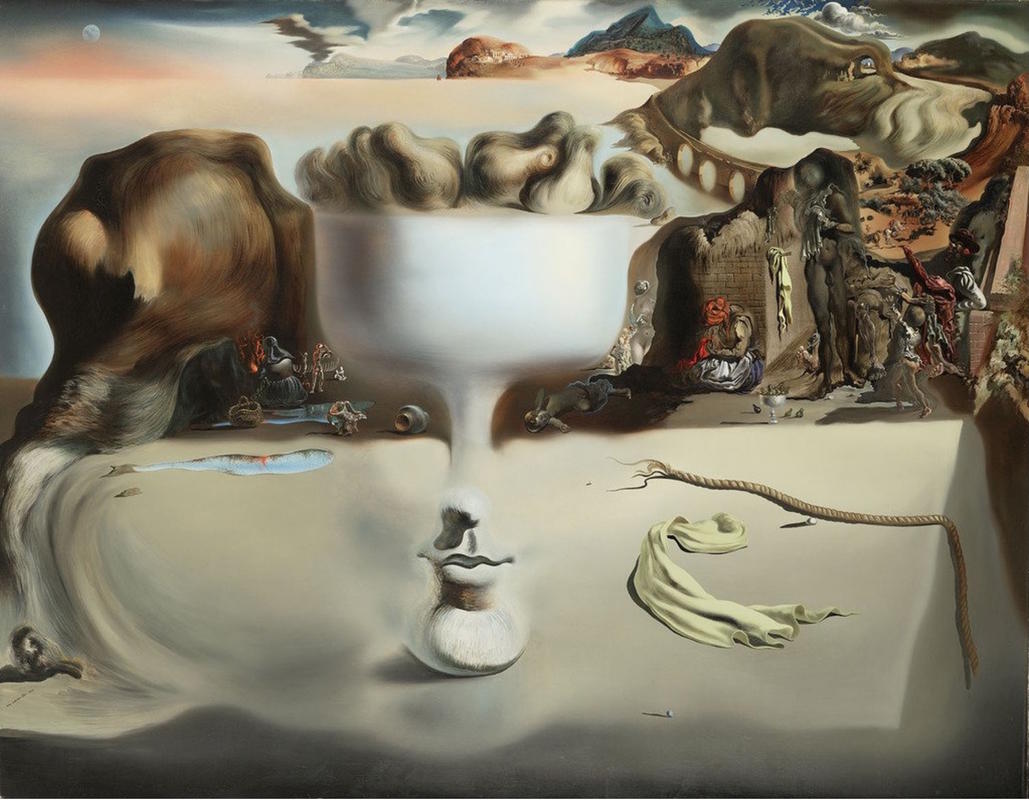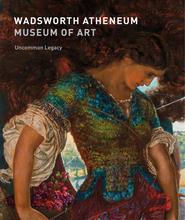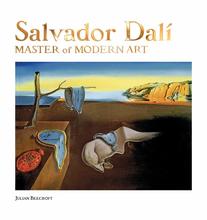More about Apparition of Face and Fruit Dish on a Beach
- All
- Info
- Shop

Contributor
Dali’s Apparition of Face and Fruit Dish on a Beach takes indecisiveness to a whole new level.
Is it a hill or a dog? A bowl of pears or a face? A dog collar or a bridge? If you have your heart set on answers, you’re going to be sorely disappointed. This painting is all of those things at once and, based on the person looking at the artwork, it can change from one thing to the other at the drop of a hat.
Apparition of Face and Fruit Dish on a Beach is like those optical illusion pictures of one form that can be interpreted two different ways, like the picture of a duck or a bunny, an old woman or a young woman, an elephant with four legs or an elephant with five legs – the ones that always seemed to be in pediatric dentist’s waiting rooms in the '90’s. The difference between those pictures and this painting is that this painting is a priceless work of art.
Dali’s “double images” were a part of his “'paranoic-critical method,' a creative process of interpreting unconscious thoughts and feelings.” The works that resulted from this method were supposed to challenge audiences. Apparently the American public ate that stuff up, earning Dali great fame and fortune, to the detriment of André Breton, who apparently just couldn’t see his friends succeed without getting super mad. He called these work by Dali "entertainments on the level of crossword puzzles." He was obviously just jealous because Dali was becoming an international celebrity and he was busy kicking people out of a group that was founded on nonsense.
The longer you look at this piece, the more utterly bizarre it becomes. There’s a beach, some naked people, a long rope, some sort of fish, and a lot of other stuff you can’t figure out. It’s confusing and crowded and honestly pretty creepy, which is all exactly Dali's style.
Sources
- "Apparition Of Face And Fruit Dish On A Beach, 1938 By Salvador Dali." https://www.dalipaintings.com. Web. 5 Sept. 2018.
- Gottesman, Sarah. "What You Need To Know About Salvador Dalí." Artsy. N.p., 2016. Web. 5 Sept. 2018.
- "SALVADOR DALI, APPARITION OF FACE AND FRUIT DISH ON A BEACH | Wadsworth Atheneum." Wadsworth Atheneum. N.p., 2018. Web. 5 Sept. 2018.
Featured Content
Here is what Wikipedia says about Apparition of Face and Fruit Dish on a Beach
Apparition of Face and Fruit Dish on a Beach is an oil painting by the Spanish surrealist artist Salvador Dalí, from 1938. It is part of the Ella Gallup Sumner and Mary Catlin Sumner Collection of the Wadsworth Atheneum Museum of Art, in Hartford, Connecticut.
Check out the full Wikipedia article about Apparition of Face and Fruit Dish on a Beach















